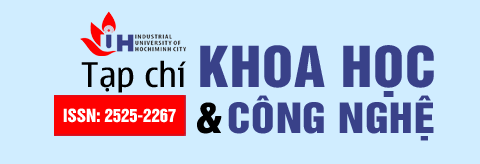STUDY AND POTENTIAL EVALUATION OF PINEAPPLE LEAF IN TEXTILE INDUSTRY
Main Article Content
Abstract
Safe and environmentally friendly green materials are gradually becoming a trend in choosing apparel products. In addition to traditional natural materials such as cotton, linen, wool or silk, vegetable fibers such as ramie, bananas fiber, pineapples and bamboo fiber are also being studied and used in textile industry. Pineapple is a popular fruit-growing plant in Vietnam. Taking advantage of pineapple leaves - a form of agricultural waste products into spinning - weaving not only overcome environmental problems but also brings economic efficiency. In this paper, study on splitting methods of pineapple fiber by mechanical, physical and chemical methods, thereby assessing the morphology and physical parameters of fibers. Then, refined dry pineapple fibers obtained through refined processing, which is blended with cotton to trail-produce pineapple leaf fiber/cotton (30/70) blended yarn. The results revealed that the separation of fibers from pineapple leaves by physical - mechanical method combined with fiber treatment in 5% Sodium Hydroxide solution at 50°C for 4 hours obtained relatively clean fibers, fibers diameter are from 56,17 – 89,36 μm, moisture absorption of fibers is 13,36 %, density is 1,44 g/cm3. Durability of (30P/70C) blended yarns (at 14,5 cN/tex) is higher than 100% cotton yarns (at 9,3 cN/tex). This blended yarn is fully wearable on knitting machines that require yarn strength > 10 cN/tex. However, the research is still limited when the fiber is cohesive after separation, the fiber diameter is quite large and uneven. Therefore, the research on the optimal separation for fiber is still underway. In addition, pretreatment of fibers is carried out manually, low productivity and time consuming. In order to overcome this problem, the research plan to manufacture equipment for processing post-harvest leaves is also in the germination stage and hopefully will be completed soon.

